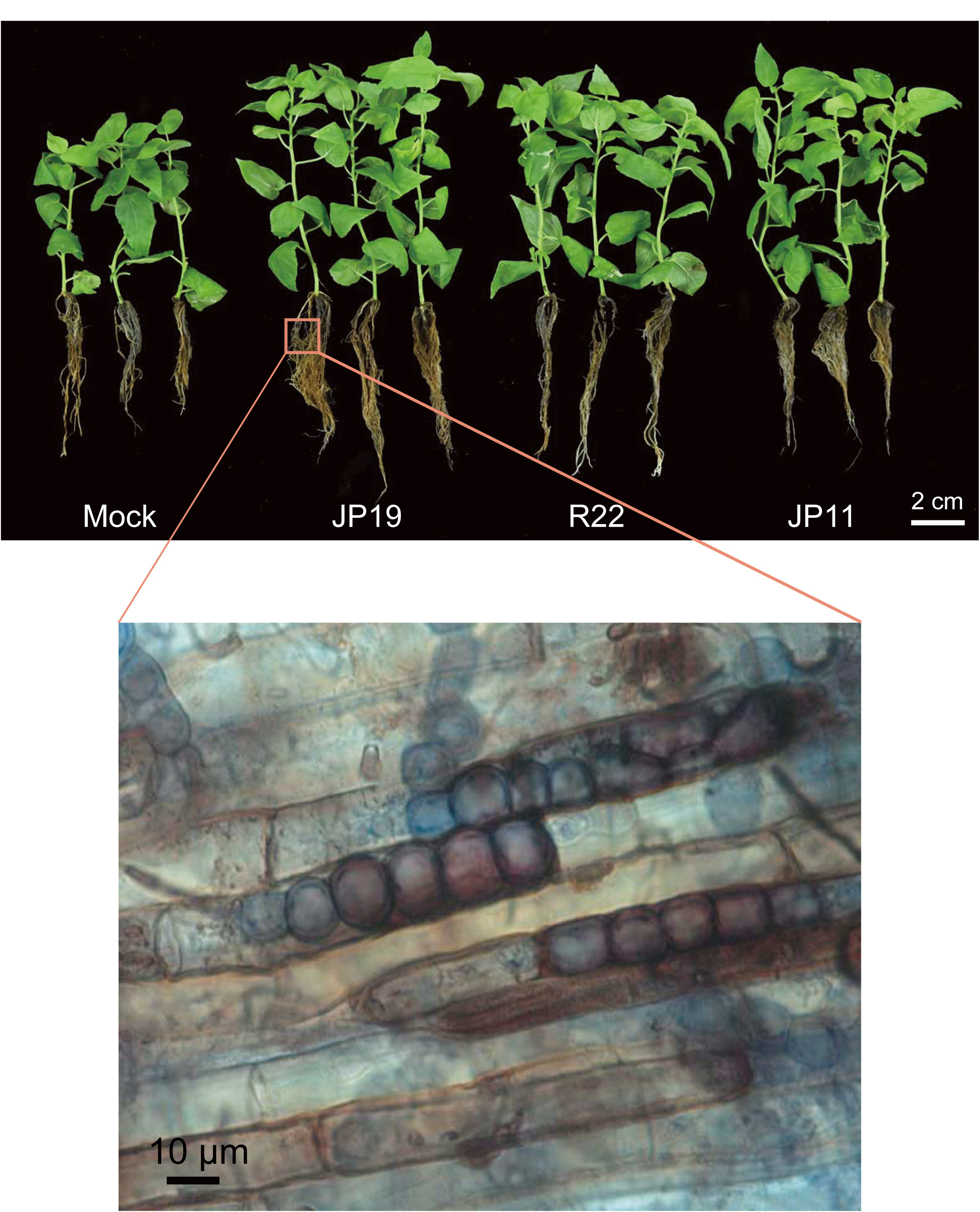Dark septate endophytes (DSEs), which are essential components of the root mycobiome, play a crucial role in enhancing plant growth and stress tolerance, particularly in extreme environments.
In our previous study, we examined the molecular mechanisms underlying the beneficial association between DSE Laburnicola rhizohalophila (Ascomycota) and its host, the native halophyte Suaeda salsa, using population genomics (Yuan et al., 2021). Our investigation identified a ~20 kbp genomic island with high divergence and a strong indication of positive selection. This region contains a melanin-biosynthetic polyketide synthase gene cluster that is linked to six additional genes that are likely involved in the biosynthesis, membrane trafficking, regulation, and localization of melanin. Additionally, we discovered hybrid isolates of L. rhizohalophila with doubled genomes, suggesting the occurrence of intraspecific polyploidization. While there is extensive knowledge about ploidy in crop plants, fishes, and yeasts, our understanding of ploidy and its functional implications in plant-associated fungi, particularly in mutualistic plant-fungi interactions, is limited. Therefore, the current study (Li et al. (2024) aimed to address this gap by exploring the conditional growth vigor exhibited by a diploid hybrid under diverse abiotic stresses, demonstrating diploidization-driven heterosis, which has rarely been investigated in this context.
Additionally, we successfully identified haploid progenitors within the population of L. rhizohalophila, which constitutes the first characterization of hybrids with genome doubling in ecologically relevant fungi. Through a comparative analysis of gene expression within each hybrid parent triad, we discovered the mechanisms underlying observed growth vigor. The identification of transgressively upregulated genes, particularly those enriched in membrane glycerolipid biosynthesis, provides compelling evidence and enhances our understanding of the genetic basis of this phenomenon. This study supports the notion that hybridization-induced genome doubling leads to the emergence of phenotypic innovations in an extremophilic endophyte.
Our research constitutes a substantial advance in the comprehension of hybridization and ploidy doubling as efficient mechanisms to generate phenotypic diversity and propel genomic evolution during the process of acclimation to saline environments. Our findings have far-reaching implications in the fields of agriculture, ecology, and evolutionary biology. Notably, our study helps to bridge the knowledge gap concerning the genetic basis of eukaryotic endophytes, which is often neglected in scientific investigations.

Follow the Topic
-
Nature Communications

An open access, multidisciplinary journal dedicated to publishing high-quality research in all areas of the biological, health, physical, chemical and Earth sciences.
Related Collections
With Collections, you can get published faster and increase your visibility.
Clinical trials 2025
Publishing Model: Open Access
Deadline: Dec 31, 2025
Women's Health
Publishing Model: Hybrid
Deadline: Ongoing


Please sign in or register for FREE
If you are a registered user on Research Communities by Springer Nature, please sign in